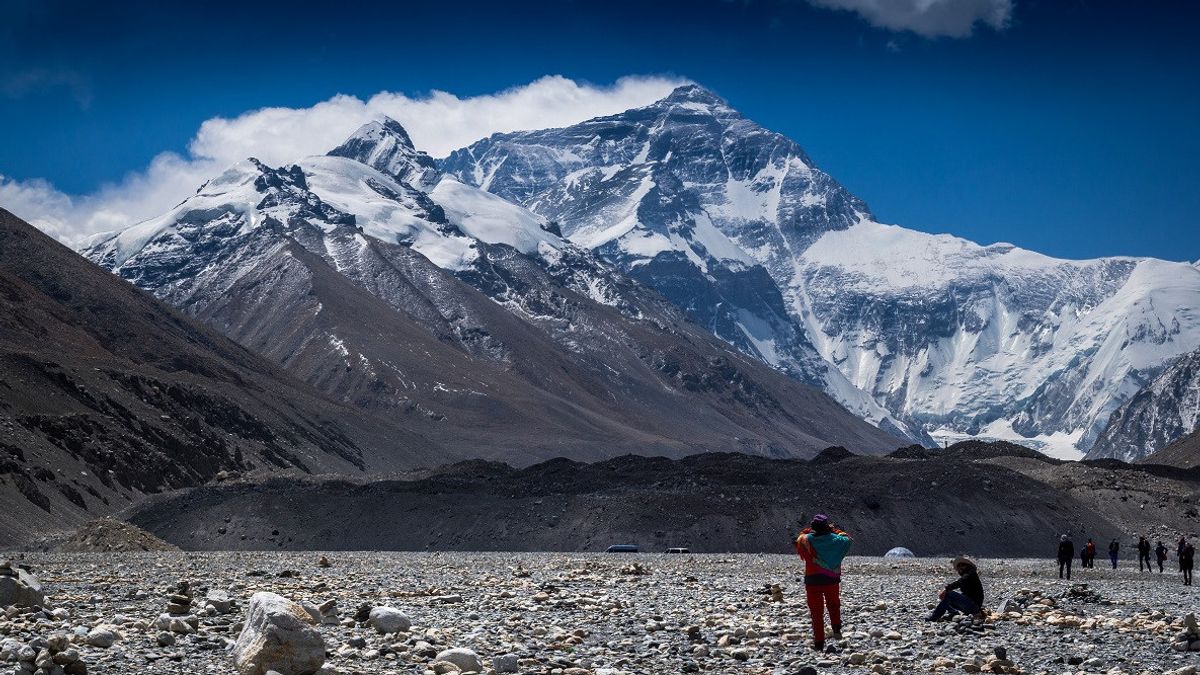JAKARTA - Chinese authorities have for the first time allowed foreign climbers to climb Mount Everest via Tibet, after being closed during the pandemic.
Instead of going through tourism officials or councils in Beijing, all permits to use the Chinese route to climb the mountain there known as Qomolanglamma, are distributed by the Association of Climbing Mount Tibet (China Tibet Mountainearing Association/CTMA).
One of the Western guides who prefers the Tibetan route over the top of the world's highest mountain (from the north), compared to Nepal's more famous route (from the south) is Adrian Ballinger, who has reached the top of Everest eight times.
This year, he will lead a group of climbers through his company, Alpenglow Expeditions, as quoted by CNN April 3.
Every year, local authorities issue a maximum of around 300 permits for non-Chinese climbers.
However, there was no official announcement issued by the Chinese government that the entrance ticket would be given.
As a result, Ballinger said, the best way for non-Chinese climbers to know that the Tibetan side of Everest will be opened is when CTMA sends a list of prices for the season. This list includes costs (which carry equipment up and down the mountain), local guides, translators, and transportation from the Tibetan capital, Lhasa, to Base Camp Everest.
Foreigners who obtain tourist visas to the Bamboo Curtain Country must obtain additional separate permits for Tibet, which is a semi-autonomous region. CTMA helps in this case for climbers.
The opportunity to climb small Everest is usually between the end of April and mid-May. The Ballinger team itself will arrive in China on April 25 after pre-akulatizing at home to save time.
Behind, Everest' hiking trail through Tibet is not as popular as the hiking trail through Nepal.
Although Nepal has a more famous and more photographed path to the summit of Everest, the larger number of visitors correlates with more waste, more erosion and more human waste.
However, this is not always the case.
"The climb from the Chinese side used to be more popular than climbing from the Nepalese side. So from around 2000 to 2007, the Chinese side is a more popular side, and it is generally understood the reason why this side is more popular is because it is safer," explained Ballinger.
In 2008, he continued, China hosted the Summer Olympics in Beijing. Before arriving in the capital, the Olympic Fire traveled to Everest, despite the fact that there were already groups of tourists who were ready to climb the world's highest peak.
SEE ALSO:
"Eight days before we all arrived at the mountain in 2008, they closed the mountain for a full season, and many people lost a lot of money," Ballinger said.
"And because of that decision, business turned to Nepal that year," he continued.
Now, with foreign climbers able to access Everest via northern routes via Tibet for the first time since 2020, the trend is slowly turning around.
The English, Chinese, Japanese, Arabic, and French versions are automatically generated by the AI. So there may still be inaccuracies in translating, please always see Indonesian as our main language. (system supported by DigitalSiber.id)


















